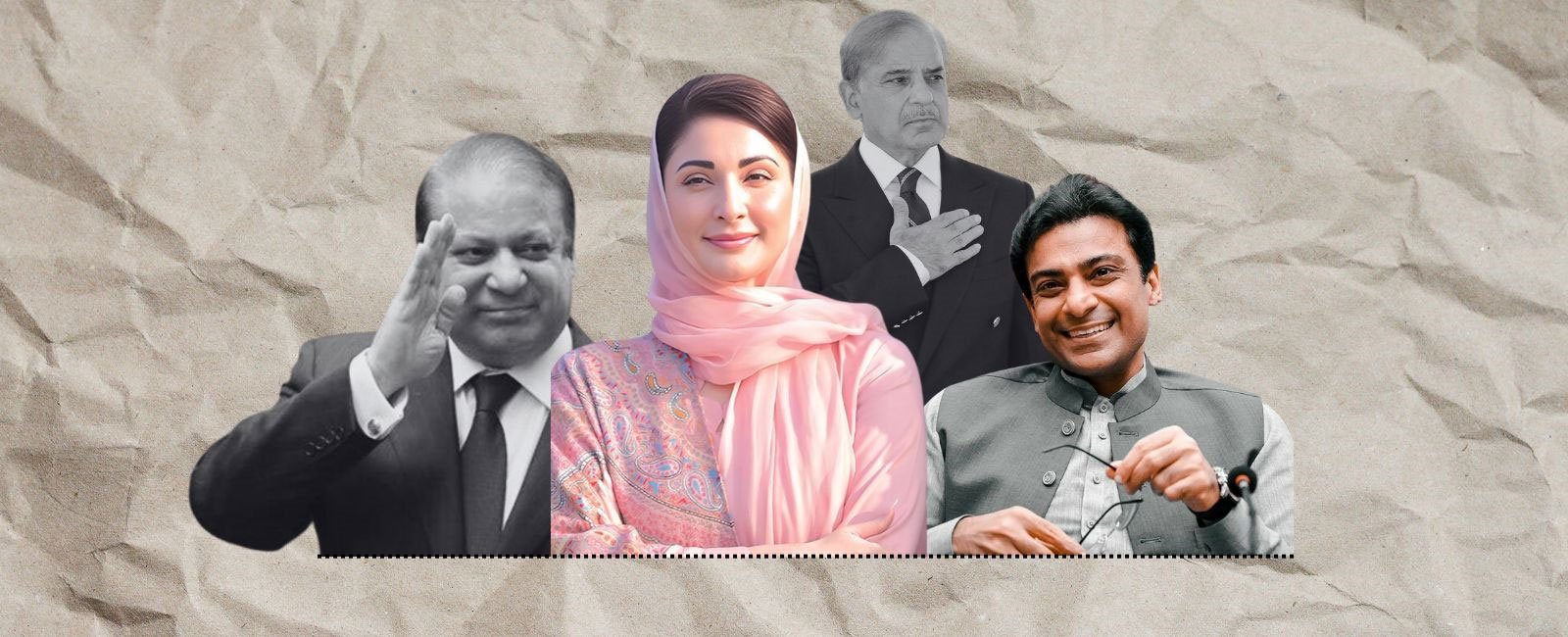An old PML-N in a new, young Punjab?
In 2024 polls, young voters cast their ballot in unprecedented numbers, recording a turnout of 48%, at par with national voter turnout

Last year, soon after the thrice-elected former prime minister Nawaz Sharif returned to Pakistan from a four-year self-exile in the United Kingdom, he chose Hafizabad, a city in the centre of Punjab, to kick off his election campaign for the 2024 election.
The decision, it seems, was deliberate.
For Sharif’s political party, the Pakistan Muslim League-Nawaz (PMLN), Punjab, Pakistan’s most populous province, was the ultimate electoral battleground. And central Punjab, located on either side of the historic Grand Trunk Road, was its home turf.
Here was a voter the PML-N knew, and could depend on. But the results in 2024 showed that something had fundamentally altered.
Several party bigwigs such as Rana Sanaullah, Khurram Dastgir, Saira Afzal Tarar, Khawaja Saad Rafique and Abid Sher Ali — were handed a crushing electoral defeat in central Punjab by its rival, the Pakistan Tehreek-e-Insaf (PTI), headed by the jailed former prime minister Imran Khan.
This time, in central Punjab’s Gujranwala district, the PML-N was only able to bag two out of five national assembly constituencies, and six out of 12 in the provincial assembly
Six years ago, in the 2018 polls, even with Sharif in jail on alleged graft charges, and despite a state crackdown on his party, his party swept through most of central Punjab.
In the Gujranwala district, for example, it picked up all the five national assembly seats and all 14 provincial constituencies.
In fact, Pakistan’s national polls, held on February 8, gave a surprising first place to Khan’s PTI, even though Sharif’s party was considered the frontrunner. Despite facing a stringent crackdown, the PTI won the most seats in the National Assembly.
But even with a big win, PTI’s 91 parliamentary seats in the centre and 108 seats in the Punjab province, were not enough to form a majority government in the National and Punjab Assembly.
The PTI alleges systematic election fraud, claiming it was denied a simple majority.
What went wrong for the PML-N?
The result led many to question the party’s performance, which was considered an unbeatable electoral force in most of Punjab, and where it faltered.
“The PML-N’s fort [central Punjab] is under heavy attack,” Bilal Gilani, the executive director of Gallup Pakistan, told Geo.tv.
“This attack started in the 2013 [polls] when the PML-N began losing its vote bank [in the central Punjab] and has continued since.”
Gilani’s Gallup Pakistan conducted several surveys before and after the February 8 parliamentary polls in Pakistan. As per his calculation, Sharif’s party lost almost a million votes in central Punjab in last month’s election. Votes which were picked by the PTI.
“Despite the major repression of the PTI, it was able to strike terror in the hearts of what is [or was] considered the PML-N’s fort,” he added, “In any election from now onwards, the PML-N does not have an assured [voter] base [in Punjab].”
Perhaps, all was not lost for the PML-N. While it shed voters in its citadel (central Punjab), it managed to rack up more wins and votes in northern and southern Punjab than it did in the 2018 polls.
But zooming out, said analysts, there is a very real generational gap confronting the PML-N in the province of over 127 million people which leaves more questions than answers about its future.
How different is the Punjab of 2024 from 2018?
Much has changed in the province in terms of demographics, since the last time the PML-N was in power, between 2013 and 2018.
Since 2017, Punjab has added over 17 million people to its population, as per the 2023 population census. In the 2024 polls, a large chunk, over 43%, of the registered voters in Punjab were categorised as young, between the ages of 18-35 years.
Still, not many of these young voters were expected to show up on polling day.
A recent report by the Lahore-based Pakistan Institute of Legislative Development and Transparency (PILDAT) found that in the past eight elections, the average youth voter turnout was “abysmally low” — at 31%. But come February 8, the young voters cast their ballot in unprecedented numbers, recording a turnout of 48%, at par with the national voter turnout, according to Gallup Pakistan.
This could be a problem for the PML-N.
It seems that while Sharif’s party may still be holding, or even expanding its backing among the older voters, it is struggling with the younger ones.
Zohra Mehmood, a 35-year-old teacher in Lahore, told Geo.tv that there was now a clear political divide within her family, where the older generation supported the PML-N, and the young adults supported Imran Khan.
“We avoid talking about politics at home to avoid tension,” she said, chuckling.
The voters in Punjab, and the rest of Pakistan, have changed dramatically in the last few years, explained Gilani.
“If you are 18-30 years old, you have a high school degree, you lay in the top 40% quantile of the income bracket, then in this category the PTI takes a sweeping 20% lead over the PML-N,” Gilani said.
“But if you are in the bottom 40% [income bracket] and do not have a high school degree and you are over 30 years, then in this category the PTI has a 20% disadvantage,” he added.
A new Punjab with new challenges?
With the PTI short on numbers to come to power, its rival, the PML-N, has cobbled together a coalition government in Punjab and Islamabad.
In a first, Sharif’s daughter, Maryam Nawaz, has been pushed forward by the party to steer Punjab.
Maryam is the first female chief minister of the province and the fourth member of her family to become the chief minister of Punjab.
Umair Javed, a political scientist at the Lahore University of Management Sciences, said that Maryam was taking over at a time when the deck might be stacked against the PML-N.
One reason, added Javed, was the anti-incumbency sentiment in Punjab against the PML-N, which was partly reflected in the election results.
For him, the biggest difference between the Punjab of 2018 and that of 2024 was that during the tenure of the coalition government led by the PML-N from April 2022 till August 2023, Pakistan buckled under inflation and faced a cost-of-living crisis.
“It certainly feels like right now the Punjabi voter no longer associates the PML-N with competence, service delivery or economic prosperity the same way that it did a few years ago,” he told Geo.tv over the phone.
The situation is also not helped by the new chief minister’s lack of administrative experience.
She has not held a government office in the past for too long and she is stepping up now against the backdrop of election rigging and manipulation accusations as well as questions over her own credibility as the provincial chief.
Her cabinet so far, includes some old faces, such as Pervaiz Rasheed, but is mostly made up of new faces, or those who were not part of her father or uncle’s core team in the province.
“There is certainly an element of newness associated with the incoming team,” said Javed, “And this lack of experience is probably a major area of concern for the PML-N, since it could take time for Maryam to realise how the province is run.”
But what do the young voters want?
Mohammad Karim, a 25-year-old student in Gujranwala, is hopeful CM Maryam will be different from her predecessors.
“I already feel she is much more energetic than the previous chief ministers,” he said, “She began working from her first day in office [on February 28].”
All five men and women, between the ages of 18-35 years Geo.tv spoke to, in Lahore and Gujranwala, insisted that the new Punjab government’s priority should be first and foremost improving the education sector.
CM Maryam also seems to have that marked as her top agenda, if her inaugural speech is any indication, where she spoke extensively about bringing reforms in the health and education sector.
But historically, the PML-N has been defined by its big-ticket infrastructure projects in Punjab, such as the orange line metro train, metro buses and the billions of rupees Lahore-Islamabad motorway project of 1997.
This time though, Javed said, the PML-N would have to curb its plans to roll out mega projects due to the financial constraints. A United States Institute of Peace report from last year concluded that the cash-strapped country needs to repay $77.5 billion in external debt by June 2026.
“The PML-N will need to think about how to sustain its image of competence without delivering motorways and flyovers,” Javed added.
For Gilani, the phrase “it’s the economy, stupid” no longer applies to the younger voter, which was “seen revolting in Punjab” in last month’s polls.
And while there may be no single cure to all of PML-N’s ailments, one way to appeal to the young voter could be to include them in the political and administrative system by empowering the local government, he opined.
“This new class of voter is looking for a share in the pie,” said Gilani, “They don’t just want to be voters of Nawaz Sharif and Maryam Nawaz Sharif. They want to be Nawaz Sharif. They want to be Maryam Nawaz.”
What does the PML-N have up its sleeve for the young people?
Azma Zahid Bokhari, the newly-appointed information minister in Punjab, told Geo.tv that for the PML-N, this time performance and development are key, in order to appeal to the young population.
“The [young] generation is very smart and vibrant,” she added over the phone, “We will try to change their minds through good governance.”
Bokhari added that Chief Minister Maryam was especially focused on ensuring the safety and rights of women in the province, for which she was personally overseeing the roll out of several projects.
“Five years is a long time, but I am hopeful that in just a few months we will be able to give the young people a good model of governance,” Bokhari said.
With additional reporting by Rana Ansar in Gujranwala.




